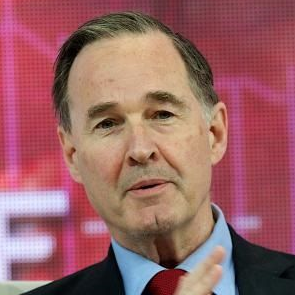Democracy and Economic Integration
Can trade and democracy bring Muslim nations fully into the global economy?
March 27, 2002
Beyond the Western world, it is no accident that countries with economic policies that embrace an anti-globalization agenda have held sway.
That agenda — including corruption, a lack of transparency and centralized economies — has primarily been associated with regimes which are hostile to pluralism and open elections.
The combination of economic isolation, political repression and poverty is also a natural breeding ground for terrorism. There are few better illustrations of this tendency in the world today than the Muslim world.
Aside from Turkey, Malaysia, Mali and Indonesia, there are no democracies in the Muslim world. And yet, the Muslim world constitutes a large part of the world’s population.
There are 31 countries whose populations are predominately Muslim. Another half dozen nations have large Muslim populations that fall short of a majority.
These nations have populations of about 825 million people — a full 14% of the world total. A few of these Muslim countries, such as Malaysia, are highly integrated in the global economy.
Malaysia is a large exporter in part because of its racial diversity. Specifically, its large Chinese and Indian populations are very active in the commercial sector.
Altogether, the exports of the world’s 31 Muslim countries total $300 billion per annum — or 5.4% of the world total.
However, the exports of one country — the globally integrated Malaysia — account for about $75 billion of that sum.
Malaysia’s $75 billion is also double the $34.6 billion in exports for Muslim Africa — and 55% of the $137 billion sum for the oil-exporting countries of the Middle East.
In other words, Malaysia — which has 2.7% of the Muslim world’s population — accounts for 25% of its exports.
In fact, excluding Malaysia’s contribution to that total, the Muslim world’s share of global trade is only 4.1% — a paltry sum when placed beside the 14% of the world’s population that is Muslim.
Muslim countries’ export share of GDP is also very modest — especially when compared to the countries of East Asia or Latin America.
For example, Egypt’s ratio of exports to GDP is only 5.7%. Algeria and Iran have ratios that hover in the 20-25% range.
Saudi Arabia and Kuwait have export/GDP ratios of 40-45% — but practically all of their exports are oil. Again, Malaysia stands out. Its export/GDP ratio is a whopping 105%.
Another problem facing Muslim countries is the amount of global foreign direct investment that they receive.
It, too, is very modest, particularly when contrasted to other developing countries. The aggregate share of global direct investment for Muslim nations is $237 billion — or 4.9% of the global total ($4.9 trillion).
Again, a few prominent countries account for much of this total. Indonesia has received $65 billion in such investment. Malaysia receives $49 billion — and Saudi Arabia $33.4 billion.
Excluding those three large countries, the remaining direct foreign investment in the Muslim world is only $147.4 billion — or 3% of the world total.
This sum ranks way behind South America ($331 billion) and China ($306 billion) — as well as the United Kingdom ($395 billion).
The fact that countries which represent about 14% of the world’s population now account for between 4-5% of global trade and investment is no accident.
Many Muslim countries have been suspicious of global economic integration and have pursued policies to isolate themselves from the world economy.
There are some signs that Muslim countries’ attitude to global trade is changing. Jordan has signed a free trade agreement with the United States that promotes both trade and investment.
At the WTO summit conference in Qatar in November 2001, Egypt did not choose to block proposals to liberalize trade and investment rules in the developing countries.
Pakistan is also trying to bolster its economy — lobbying hard for textile trade concessions in North America and Europe.
The coming liberalization of global textile trade should bolster the exports of several Muslim countries — where labor costs are relatively low.
If the trend toward new economic openness continues, it will also help to encourage more tolerance of political freedom and democracy in the Muslim world.
Yet, anti-globalization forces have so far held the upper hand in the intellectual debate about free trade and multinational investment in the Muslim world.
If that trend continues, the outlook for both economic growth and democracy in Muslim countries will darken.
Read previous
The Second Coming of “Saint” Paul
March 26, 2002
